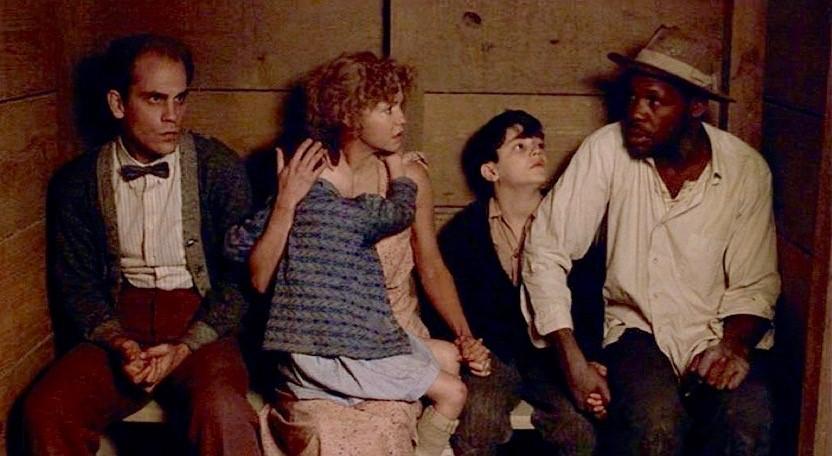
Places in the Heart (1984), written and directed by Robert Benton, won two Academy Awards—Best Original Screenplay and Best Actress for Sally Field. The film also received nominations for Best Film, Best Director, Best Supporting Actress (Lindsay Crouse), Best Supporting Actor (John Malkovich), and Best Costume Design.
Considering the flashy blockbusters that often win big prizes today, one may wonder what drew the Academy (and several other media organizations) to honor this quiet, understated film.
Places in the Heart tells the intertwined stories of two sisters, their families and neighbors in 1930s Waxahachie, Texas. Edna (Sally Field) is married to the local sheriff, while Margaret (Lindsay Crouse) runs a beauty-salon in her home to supplement the income of her free-lance mechanic husband Wayne (Ed Harris). When a random bullet kills Edna’s husband, she’s forced to find new ways to keep her family together.
Benton won the Oscar for best screenplay, but it’s not the writing that one remembers in this film, it’s the images. The soundtrack is also key. Consider the opening sequence, which begins with a shot of a large church dominating the skyline, accompanied by piano and choir rendering of “Blessed Assurance,” then cutting to a much smaller, different church, just letting out of service, and a series of vignettes of various characters and scenes: the local school-teacher and her husband in a restaurant; a homeless woman living in her car (establishing the Depression-era timeframe); a house in the country, possibly abandoned; a black man begging at a door and saying grace over the food (we’ll later be introduced to him as “Mose”); another shot of the distant church tower; Margaret’s house and her family at dinner; a large black family at their Sunday dinner; a random assortment of fellows hanging out; and finally Edna’s house, and she brings in the mashed potatoes as the hymn ends.
One interpretation is that we are being presented with a vision of “the holy catholic church”: all these people are part of the community, some more central than others, but the “big” church embraces them all.
Another possibility is that the big church symbolizes God or Christ (the church is, after all, the Body of Christ), watching over the community, occasionally seeming to be distant. Note that none of the movie characters ever actually enter this enormous, imposing church, only the small, more humanly-scaled one. Yet it appears in scene after scene, a guarding or judging presence: For example, before the bank rejects Edna’s loan application, we see this church, and also before a great tornado that brings some significant changes to the town and its people, both physical and spiritual. Without these subplots and characters, the final scene would not have the weight it does.
The character of “Mose” is an obvious Christ-figure. As a black man, Mose occupies the lowest place in this 1930s Texas community, yet he teaches Edna how to farm cotton, helps her harvest the crop, and keep her misfit family of children and a blind broom-maker together. As in the Gospels, the powerful cannot bear a challenge to their authority from the lowly, and Mose is driven out, but not before achieving his purpose and leaving gifts with his “disciples.”
In the final scenes, we return to “Blessed Assurance,” the great church, and the small one. Look carefully at who is in the pews as the hymn ends, the pastor begins reading the scripture, and the communion plates are passed. This scene is the best symbolic image I’ve ever seen of “the communion of the saints”: the Holy Eucharist or Lord’s Supper in which we are united in remembering Christ’s sacrificial death and resurrection, and also the mystical unity of the church, the Body of Christ, which exists both now and in eternity.
—Elizabeth Rambo (2011)
- Directed by: Robert Benton
- Produced by: Arlene Donovan Michael Hausman
- Written by: Robert Benton
- Music by: John Kander
- Cinematography by: Néstor Almendros
- Editing by: Carol Littleton
- Release Date: 1984
- Running Time: 111
- Language: English
Arts & Faith Lists:
2006 Top 100 — #52
2011 Top 100 — #52
2020 Top 100 — #95